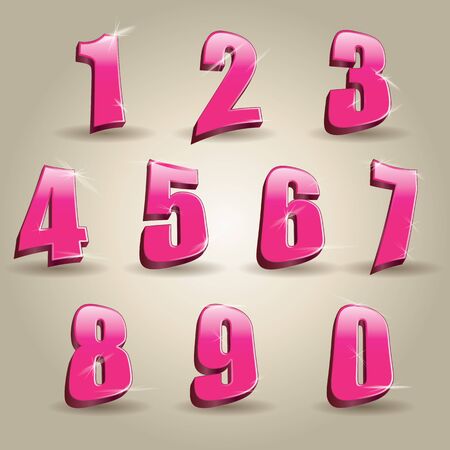1. Introduction to Bazi and Its Cultural Significance
Bazi, also known as the Four Pillars of Destiny, is an ancient Chinese system used to understand a person’s fate and character. The term “Bazi” literally means “eight characters,” referring to the four pairs of characters that represent a person’s year, month, day, and hour of birth. Each pair consists of a Heavenly Stem and an Earthly Branch, which are rooted in the traditional Chinese calendar.
What Is Bazi?
Bazi is a method of fortune-telling that uses one’s birth information to reveal patterns in their life. By decoding these eight characters, practitioners believe they can uncover a person’s strengths, weaknesses, career prospects, relationships, and even health issues. Unlike astrology systems familiar in Western culture, such as zodiac signs based on the month you were born, Bazi takes into account not just the year but also the month, day, and hour—making it unique and detailed.
The Core Principles of Bazi
| Element | Description |
|---|---|
| Heavenly Stems | Ten elements representing yin and yang forms of wood, fire, earth, metal, and water |
| Earthly Branches | Twelve animals (Chinese Zodiac) connected with specific months and elements |
| Yin & Yang | Duality concept showing balance in all things |
| Five Elements (Wu Xing) | Wood, Fire, Earth, Metal, Water – dynamic forces affecting destiny |
Bazi’s Place in Chinese Culture
Bazi is deeply woven into Chinese society. For centuries, families have consulted Bazi experts before making important decisions like marriage or starting a business. It is not just about predicting the future but understanding oneself better and finding harmony with life’s challenges. In traditional celebrations like Lunar New Year or weddings, people often consider Bazi readings for good luck and auspicious timing. Even today in modern China—and among Chinese communities worldwide—Bazi remains a respected cultural practice.
This introduction gives you a basic idea of what Bazi is all about: a blend of time-honored wisdom and personal insight. Understanding these fundamentals sets the stage for exploring how Bazi developed throughout history and why it still matters today.
2. The Historical Foundations of Bazi
Bazi, also known as the Four Pillars of Destiny, has its roots deep in ancient Chinese civilization. To understand how Bazi came to be, its important to look at the different periods and influences that shaped its development.
Ancient Dynasties and the Birth of Bazi
The origins of Bazi can be traced back over a thousand years, with early forms appearing during the Tang dynasty (618–907 AD). However, the system gained widespread popularity and refinement during the Song dynasty (960–1279 AD). During these times, scholars and astrologers began recording birth dates and analyzing patterns to predict individual destinies.
| Dynasty | Time Period | Role in Bazi Development |
|---|---|---|
| Tang Dynasty | 618–907 AD | Early concepts of time-based destiny analysis emerged |
| Song Dynasty | 960–1279 AD | Bazi became formalized; texts were written and studied |
Influential Texts and Early Utilizations
The formalization of Bazi is credited to key figures such as Xu Zi Ping, a famous astrologer from the Song dynasty. He developed the core structure of what we now know as Bazi, using four pillars—year, month, day, and hour of birth—to create a persons destiny chart. Early texts like “Zi Ping Ba Zi” played a huge role in teaching and spreading the practice throughout China.
How Was Bazi Used in Ancient Times?
In ancient China, Bazi was not just for fortune-telling. It was used by emperors to choose auspicious dates for important events, by families to arrange marriages, and even by everyday people seeking guidance on career or health decisions. The practice quickly became part of daily life for many Chinese people.
Key Takeaways from Ancient Bazi Practices
- Bazi’s foundation lies in observing natural cycles—like seasons and elements—and connecting them with human lives.
- The system evolved alongside advancements in astrology and mathematics during powerful dynastic reigns.
- Bazi’s texts have stood the test of time and are still referenced today by practitioners worldwide.

3. Philosophical Influences on Bazi Development
The Role of Philosophy in Ancient Chinese Life
Bazi, also known as the Four Pillars of Destiny, is deeply connected to traditional Chinese philosophies. In ancient China, daily life and even government decisions were often guided by philosophical beliefs. Two main schools of thought—Taoism and Confucianism—played a big part in shaping how Bazi was developed and passed down through generations.
Taoism and the Concept of Harmony
Taoism (Daoism) is all about living in harmony with nature and understanding the natural flow of the universe, called the Tao. This philosophy influenced Bazi by introducing ideas like Yin and Yang, as well as the Five Elements (Wood, Fire, Earth, Metal, Water). These elements are key to interpreting a person’s destiny in Bazi.
| Taoist Influence | How It Shaped Bazi |
|---|---|
| Yin and Yang | Bazi charts balance these two forces to understand personality and destiny. |
| Five Elements | Each pillar in Bazi represents one element, showing how different energies interact in a person’s life. |
| Natural Cycles | Bazi looks at time cycles (year, month, day, hour) to see life’s ups and downs, just like Taoism studies nature’s patterns. |
Confucianism: Order and Social Values
Confucianism is centered around social harmony, family roles, and moral behavior. While Taoism gave Bazi its cosmic framework, Confucianism helped root it in everyday life. People used Bazi not just for personal insight but also for making important decisions—like choosing marriage partners or planning careers—based on moral and social values taught by Confucius.
| Confucian Influence | How It Shaped Bazi Practice |
|---|---|
| Family Importance | Bazi readings often consider family relationships when predicting fortunes. |
| Ethical Guidance | Using Bazi responsibly is seen as a way to live ethically and harmoniously. |
| Social Harmony | Bazi can help people fit into society better by understanding their strengths and weaknesses. |
Bazi’s Transmission Through Generations
The combination of these philosophies made Bazi more than just fortune-telling—it became a respected tradition that families handed down over centuries. Teachers would pass on both the technical knowledge of chart reading and the underlying values from Taoism and Confucianism. This blending of ideas helped ensure Bazi’s lasting impact in Chinese culture—and its continued interest today among people curious about self-discovery and destiny.
4. Key Elements and Structure of Bazi
Understanding the Four Pillars System
Bazi, also known as the Four Pillars of Destiny, is a system deeply rooted in ancient Chinese philosophy. At its core, Bazi analyzes a person’s destiny based on their birth data. The “Four Pillars” refer to four key aspects: the year, month, day, and hour of birth. Each pillar consists of two characters—one representing a Heavenly Stem and the other an Earthly Branch. Together, these eight characters (bazi means “eight characters” in Mandarin) form the building blocks of your unique life blueprint.
Symbolism Behind Stems and Branches
The Heavenly Stems and Earthly Branches are not just numbers or names—they carry rich meanings drawn from nature and ancient cosmology. The ten Heavenly Stems correspond to elements like Wood, Fire, Earth, Metal, and Water (each appearing in their yin or yang form). The twelve Earthly Branches are linked to the Chinese zodiac animals and also relate to the five elements. This structure reflects how early scholars viewed time and nature as cyclical and interconnected.
Heavenly Stems and Their Elements
| Stem | Element | Yin/Yang |
|---|---|---|
| Jia | Wood | Yang |
| Yi | Wood | Yin |
| Bing | Fire | Yang |
| Ding | Fire | Yin |
| Wu | Earth | Yang |
| Ji | Earth | Yin |
| Geng | Metal | Yang |
| Metal | Yin | |
| Ren | Water | Yang |
| Gui | Water | Yin |
The Twelve Earthly Branches and Zodiac Animals
| Branch Name (Chinese) | Zodiac Animal (U.S. Equivalent) | Main Element Association |
|---|---|---|
| Zǐ (子) | Rat | Water |
| Chǒu (丑) | Ox | Earth |
| Yín (寅) | Tiger | Wood |
| Mǎo (卯) | Rabbit | Wood |
| Chén (辰) | Dragon | Earth |
| Sì (巳) | Snake | |
| Wèi(未 ) | Goat | Earth |
| Shēn(申 ) | Monkey | Metal |
| Yǒu(酉 ) | Rooster | Metal |
| Xū(戌 ) | Dog | Earth |
| Hài(亥 ) | Pig | Water |
How Ancient Scholars Formulated Bazi
The origins of Bazi date back to ancient China, where scholars observed patterns in nature and human lives. By tracking changes in seasons, cycles of animals, and elemental forces, they built a system that connects each individual’s birth moment with broader cosmic rhythms. These scholars believed that understanding this interplay could reveal a persons strengths, challenges, and potential paths in life.
Why Is This Structure Still Relevant Today?
Even today in American culture, people look for tools to better understand themselves—whether through astrology or personality tests. Bazi offers an ancient yet timeless way to see how you fit into the bigger picture of life’s cycles. Its detailed structure provides insight into your unique traits using symbols that have stood the test of time.
5. Bazi in the Modern World: Enduring Relevance
Bazi, also known as the Four Pillars of Destiny, has been a key part of Chinese culture for thousands of years. But its influence doesn’t stop there—Bazi has managed to stay relevant even today, bridging the gap between ancient wisdom and modern lifestyles. Whether you’re in Beijing or Boston, more people are discovering how Bazi can provide unique insights into personality, relationships, and life choices.
How Bazi Stays Important Today
In traditional Chinese communities, Bazi is still used for important decisions like picking wedding dates or naming babies. However, with the rise of the internet and growing global curiosity about Eastern philosophies, Bazi has started to gain traction in Western countries too. People from all walks of life are exploring Bazi as a tool for self-discovery and personal growth.
Why Is Bazi Still Popular?
| Traditional Uses | Modern Adaptations | Western Interest |
|---|---|---|
| Choosing auspicious dates Understanding family dynamics Career guidance |
Personal development workshops Online readings and apps Counseling and coaching services |
Cultural curiosity Alternative wellness practices Comparisons with astrology or Myers-Briggs |
Bazi’s Appeal Across Cultures
What makes Bazi stand out is its focus on balance and harmony. Unlike some Western systems that focus mainly on personality traits, Bazi looks at your whole life path—connecting you with the cycles of nature and time. This holistic perspective resonates with many Americans who are searching for meaning beyond conventional self-help methods.
Examples of Bazi in Everyday Life
- A young professional in New York uses an online Bazi calculator to understand her strengths before switching careers.
- A couple in Los Angeles consults a Bazi expert for advice on relationship compatibility.
- A wellness coach incorporates basic Bazi principles into their personal growth workshops.
The Future of Bazi
Bazi’s journey from ancient China to modern America shows its lasting value. As our world becomes more connected, tools like Bazi offer new ways to understand ourselves and others—regardless of where we come from. Whether you’re curious about your destiny or just looking for fresh insights, Bazi continues to inspire people around the globe.


